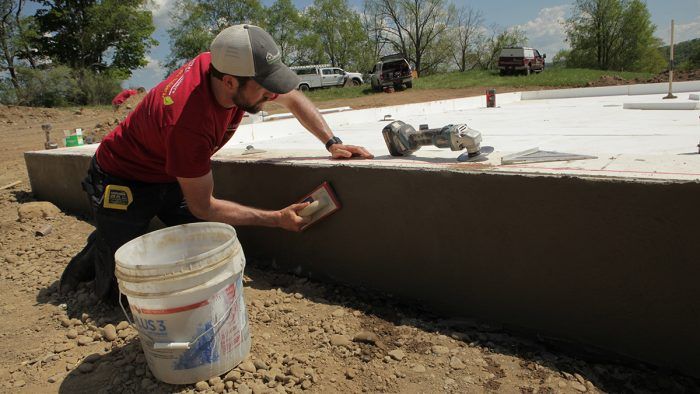Protect Foundation Foam
A great choice for exterior foam on foundations is a borate-treated expanded polystyrene (EPS) that performs at a similar R-value to extruded polystyrene (XPS) but is much less environmentally unfriendly.

I’m building a home on the wet side of Oregon that will have a conditioned crawlspace. I’m planning to seal the exterior side of the masonry stem walls with an asphalt damp-proofing product and then add a layer of R-15 foamboard insulation over that. Below grade, the foam will be protected with a dimple-board product.
I have two questions: First, what is the best type of foam to use? I want to avoid products that are prone to insect and critter infestation. And second, how do I protect the foam in those areas where it sits above grade? I’m thinking of installing 3 in. of the pink foam, and my drafting professional is suggesting a cementboard to protect the foam above grade. Does this sound right?
—Paula Thonney via GreenBuildingAdvisor.com
Michael Maines, principal of Maines Design and co-author of The Pretty Good House, replies: Exterior foundation insulation is usually rigid foam, and the most common is extruded polystyrene (XPS), the familiar blue, pink, or green stuff you can find at any lumberyard. It performs at about R-5 per in. when new and R-4.2 once air has displaced the blowing agents in the foam. I am not aware of any current product lines of XPS that include an insecticide. XPS is also one of the least environmentally friendly materials we can use.
My choice for exterior foam on foundations is a borate-treated expanded polystyrene (EPS) that performs at a similar R-value to XPS. I often specify Type II for foundation exteriors, which has the same compressive strength (15 psi) as commonly used XPS and similar working characteristics, although it’s a bit more brittle. Type II EPS is denser and holds together much better than the lighter-density types used as packing material or offered for sale at bigbox stores. Unlike XPS, EPS is available with a borate additive—a natural mineral that deters insects and possibly other pests while remaining nontoxic to humans. In addition, borate has smolder resistance and flame-retarding qualities.
When it comes to protecting the foam above grade, there are plenty of options. I have seen cementboards used on projects; however, code requires the protection to extend at least 6 in. below grade, and cementboards are typically not intended for use below grade.
Many of my colleagues are using sheet metal to wrap the foundations. In a heavy-enough gauge it can be effective and long-lasting, and installation is straightforward. But from what I’ve observed, it’s difficult to avoid oil-canning, which can make the foundation appear wavy.
Pressure-treated plywood is another possibility. It’s durable and affordable, and it can be painted or covered with another material. Fiber-reinforced plastic (FRP) is also an option, but I’ve not worked with it.
Coating expanded metal lath with a cementitious parging is a traditional method of protecting foam. In my designs, I typically use a synthetic cementitious coating— specifically Styro Industries’s Tuff II. It looks similar to cementitious parging but is easier to install because it can be applied directly to the foam; however, I first apply a fiberglass mesh to the foam for better adhesion.
From Fine Homebuilding #315
RELATED STORIES
Fine Homebuilding Recommended Products
Fine Homebuilding receives a commission for items purchased through links on this site, including Amazon Associates and other affiliate advertising programs.

Great Stuff Foam Cleaner

Utility Knife

Insulation Knife





























